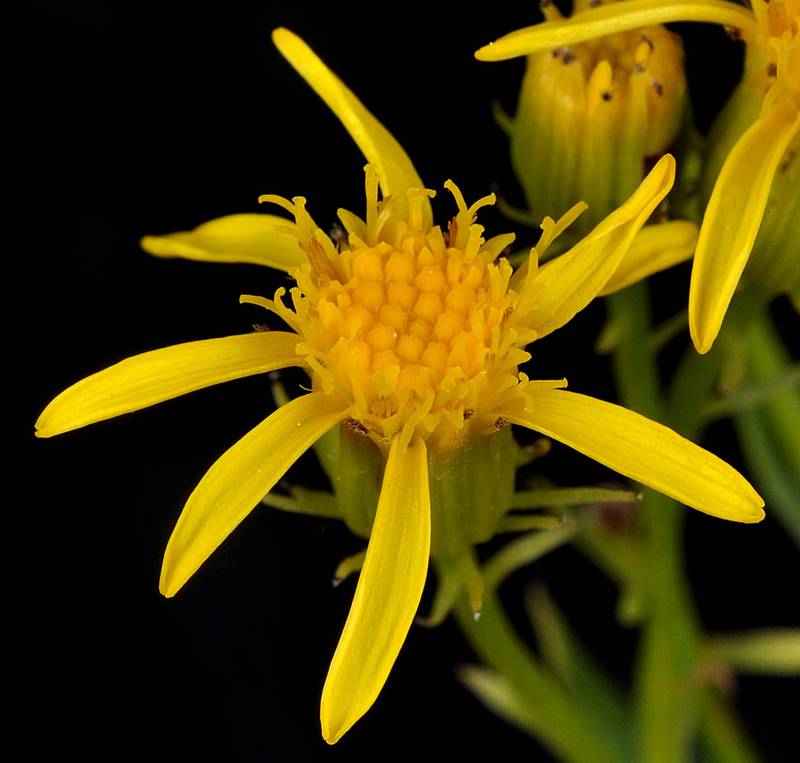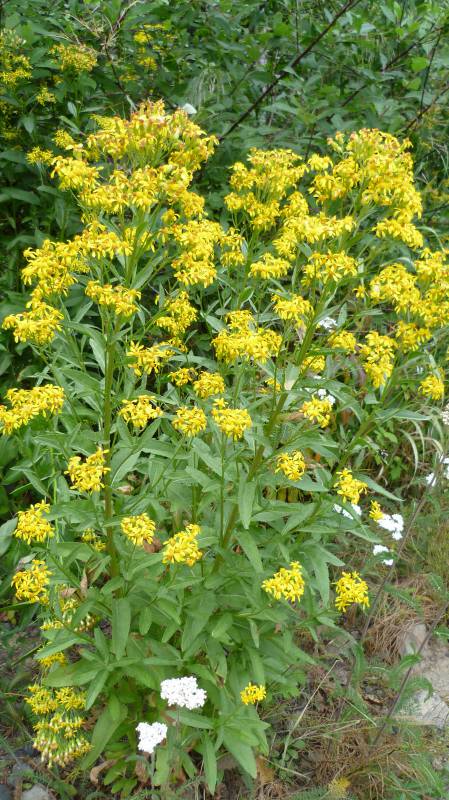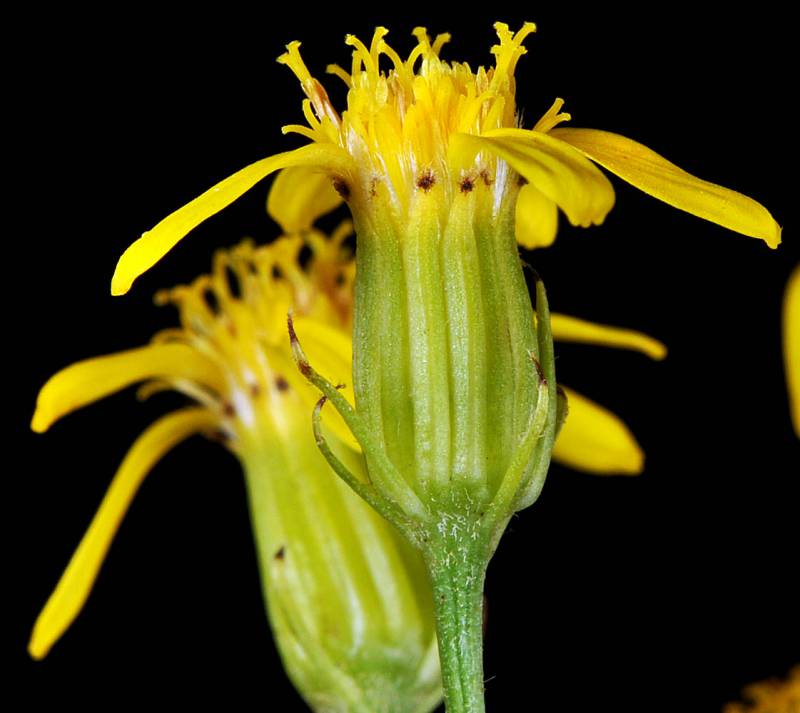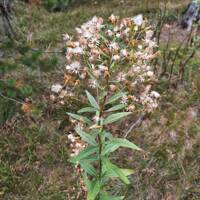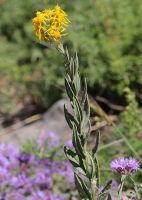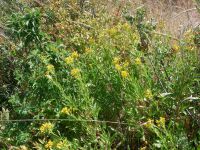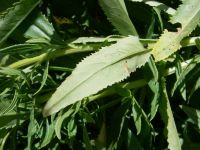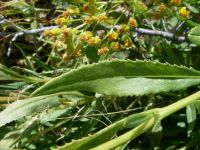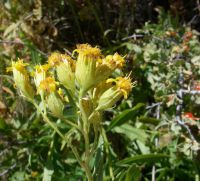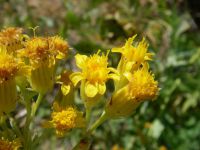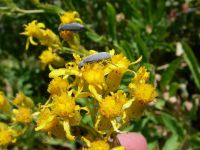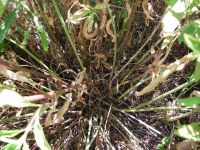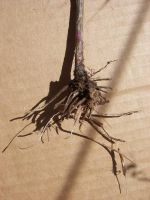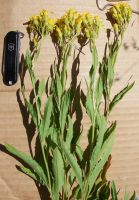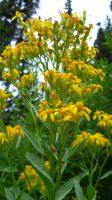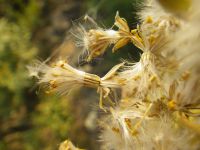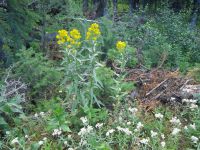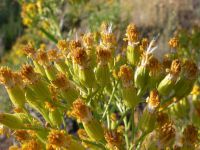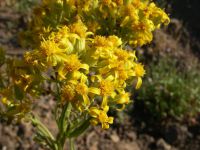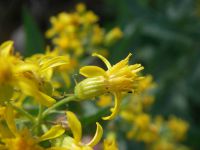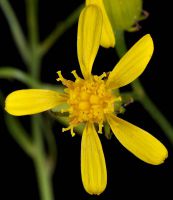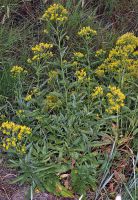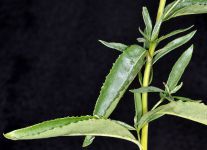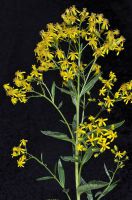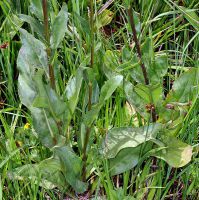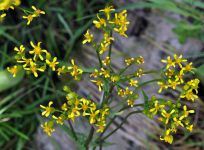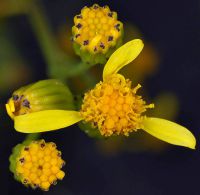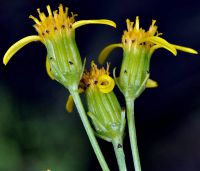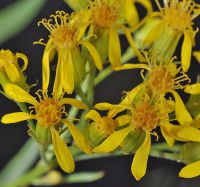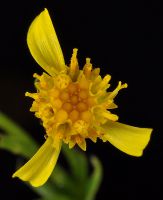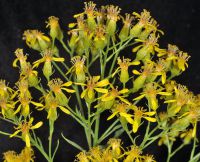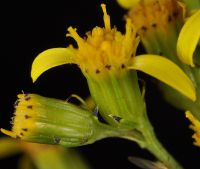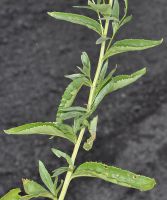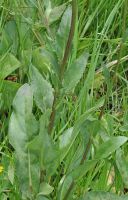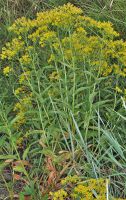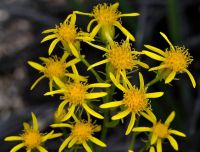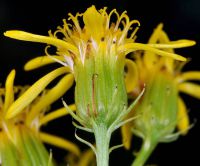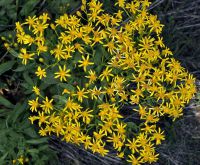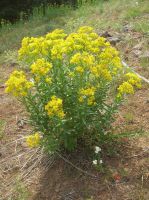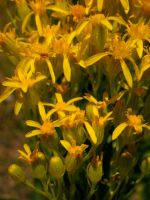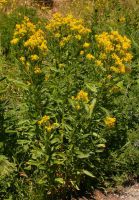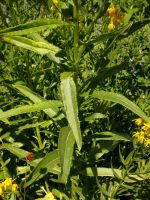Distribution: Occurring chiefly east of the Cascades crest in Washington; Washington to California, east to Montana, Wyoming, and Colorado.
Habitat: Meadows and open, moist hillsides, foothills to mid-elevations in the mountains.
Flowers: June-August
Origin: Native
Growth Duration: Perennial
Conservation Status: Not of concern
Pollination: Bumblebees, bees, butterflies, flies, beetles
Stout, glabrous, fibrous-rooted perennial 5-20 dm. tall, stems clustered.
Numerous, not tufted toward the base, not much reduced upward, the lower leaves oblanceolate, short-petiolate, early deciduous, the others lanceolate, tapering to a short petiole, 5-15 cm. long and 1-4 cm. wide, sharply toothed.
Heads numerous on short peduncles, almost cylindric, the disk 3-7 mm. wide; involucre 6-8 mm. high, its bracts about 8 or about 13, often black-tipped; rays few, about 5 or 8, 5-8 mm. long, yellow.
Look for a tall, upright plant with large, sharply toothed leaves the length of the stem.
Publication: Fl. Bor.-Amer. 1: 333. 1834.
-
var. serra – tall butterweed, butterweed groundsel
 Occurring chiefly east of the Cascades crest in Washington; Washington to California, east to Montana, Wyoming, and Utah.
Occurring chiefly east of the Cascades crest in Washington; Washington to California, east to Montana, Wyoming, and Utah.
PNW Herbaria: Specimen records of Senecio serra in the Consortium of Pacific Northwest Herbaria database
WA Flora Checklist: Senecio serra checklist entry
OregonFlora: Senecio serra information
E-Flora BC: Senecio serra atlas page
CalPhotos: Senecio serra photos

